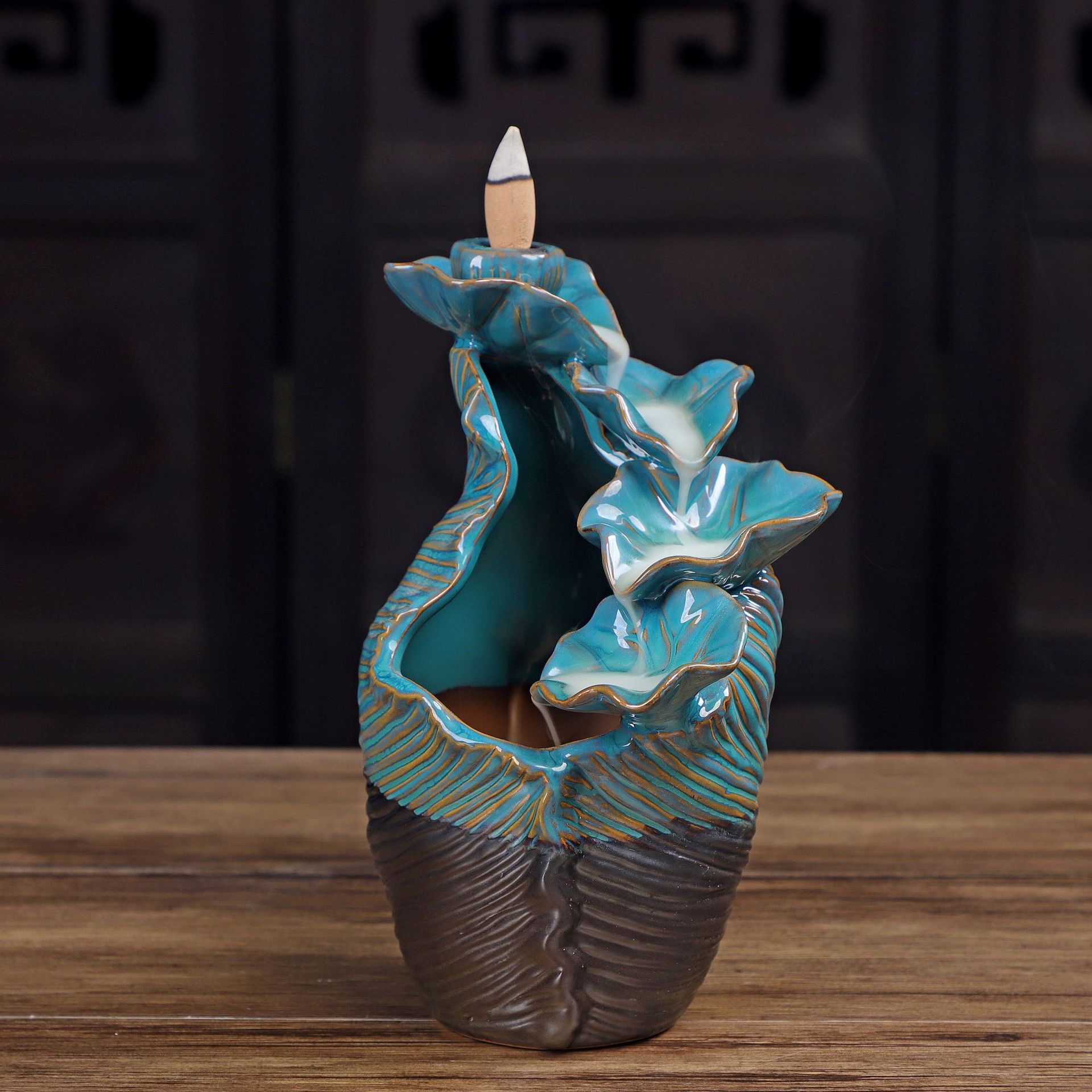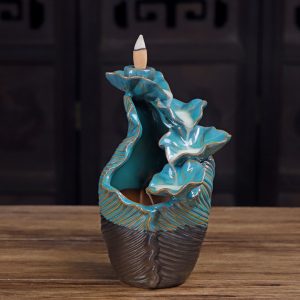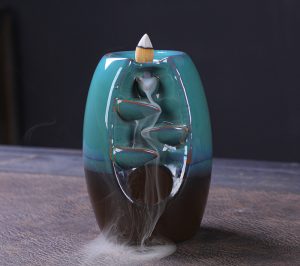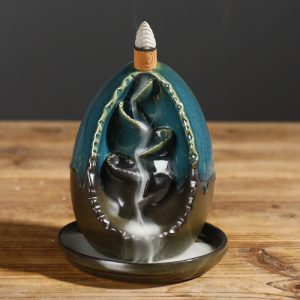Backflow incense, due to its high tar content, creates smoke that flows from a higher point to a lower point, similar to water. A backflow incense burner has a hole or groove aligned with the incense cone’s small hole, facilitating the smoke’s downward flow. It is important to note that this type of backflow incense burner is designed specifically for use with “tower incense,” which is estimated to release more impurities during the burning process. This type of backflow incense burner has been around for a long time, showcasing the wisdom of ancient people. Backflow incense cones are generally cone-shaped and hollow and are typically used with a dedicated incense holder with holes or grooves to facilitate the downward flow of smoke.
How to use backflow incense:
- Backflow incense cones are generally cone-shaped and hollow. They are typically used with a dedicated incense holder that has holes or grooves to facilitate the downward flow of smoke.
- After setting up the incense equipment, light the backflow incense cone, and do not immediately extinguish the flame. Let the flame burn slightly for 4-6 seconds until it is well-lit. Then, place the backflow incense cone onto the dedicated backflow incense burner. Initially, the smoke will not flow downward, but after about one to two minutes, it will gradually change direction and start flowing from the bottom.
- Smoke contains particles that are heavier than air. By isolating the combustion and heating from the surrounding upward hot air, preventing the hot air from rising along with the smoke, the smoke will naturally sink. The smoke also contains a higher concentration of impurities, meaning that more particles are generated when the incense is lit. With a higher ratio of smoke particles to air, the smoke will sink.
Principles of backflow incense burners:
- Backflow incense cones are specially designed with a small hole inside to facilitate the downward flow of smoke.
- Backflow incense burners have a hole or groove aligned with the backflow incense cone’s hole to facilitate the smoke flow. After placing the incense equipment, light the backflow incense cone, and let the flame burn slightly for 4-6 seconds until it is well-lit. Then, insert the extinguished flame of the fan into the dedicated backflow incense burner. Initially, the smoke will not flow from the bottom, but after about one to two minutes, it will change direction and flow from the bottom.
- Smoke contains particles that are heavier than air. By ensuring that there is no air current in the room, isolating the combustion and heating, and preventing the upward hot air from mixing with the smoke, the smoke will naturally sink. The smoke also contains a higher concentration of impurities, meaning that more particles are generated when the incense is lit. With a higher ratio of smoke particles to air, the smoke will sink.
Considerations when burning backflow incense:
- Backflow incense does not float in the smoke like regular incense; instead, it flows downward. However, this belief is incorrect. Backflow incense has auspicious symbolism in feng shui, representing the dispelling of evil spirits. It also has a high visual appeal. However, when burning backflow incense at home, it is still important to avoid related feng shui taboos.
- Backflow incense is a special type of incense, and its smoke does not rise like regular incense but flows downward like running water. This “flowing” effect is not considered negative in feng shui; on the contrary, it is considered highly auspicious. However, when burning backflow incense, it is important to observe the following feng shui taboos: avoid strong drafts, use high-quality tower incense, and avoid placing it in the bedroom, among others.




